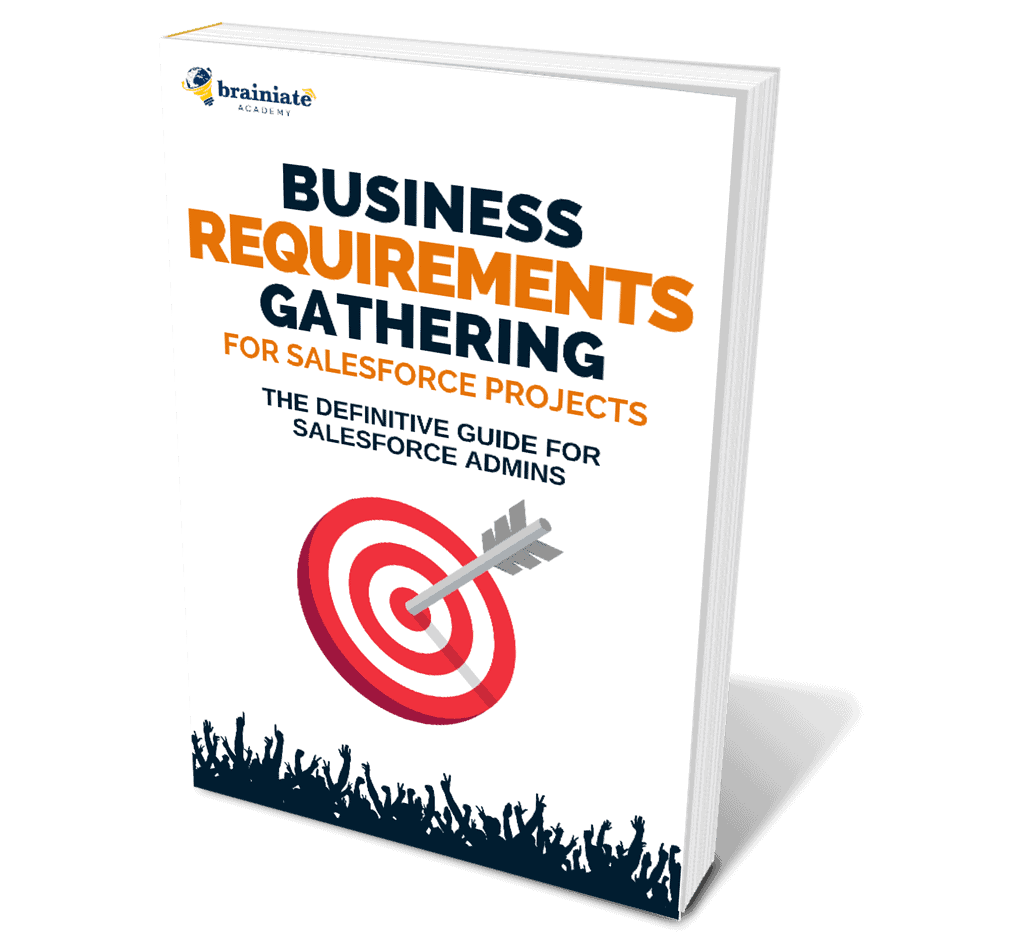Initializing Your Salesforce Project (What You Need to Know)

As a Salesforce Admin, knowing how to set up and initialize a new project properly is an essential skill. It’s not just crucial for staying organized; successful implementation of your Salesforce system can make or break the success of your business!
Without proper setup, you could be wasting time, money, and energy trying to recoup lost data or dealing with user complaints about missing features. After all, one of the key benefits of using Salesforce is its innovation and flexibility—both depend on having everything appropriately connected from the start.
In this blog post, we’ll look at what you need to know about initializing your next Salesforce project so that you can ensure a successful outcome!
Introduction
Initializing a Salesforce project is the first step in successfully managing the project. It involves establishing the goals and objectives of the project, as well as creating a plan for achieving them. This includes gathering information about the current state of the Salesforce environment, identifying potential risks and areas of improvement, and developing an implementation roadmap. During this phase, it is essential to ensure that all stakeholders in the project have a shared understanding of goals and objectives so they can work together to achieve them.
Start by defining your end goal and the desired outcome to initialize a Salesforce project effectively. This will help you develop a strategy for reaching that goal in the most efficient way possible within your given timeframe. You should also consider any potential constraints or limitations that may impact how you implement your plans, such as budget, resources, or existing technology. Once you’ve clarified what success looks like for your Salesforce project, you can begin defining key milestones to track progress.
You should also use this initial project phase to identify any potential risks associated with completing it and areas of improvement that could make it more successful.
Understanding these details will help prepare you if any issues arise during implementation or changes need to be made along the way. Additionally, during this phase, you should define clear roles and responsibilities for each team member involved to ensure smooth execution down the line.
Creating an implementation roadmap is another integral part of initializing a Salesforce project. The roadmap should include essential activities such as analyzing business requirements, configuring settings and objects within Salesforce, importing data from legacy systems if needed, testing scenarios before launch, and training users on new features once they’re live.
Defining these activities upfront will help keep everyone on track throughout each stage of development and provide visibility into when specific tasks are due according to schedule.
Overall, initializing a Salesforce project requires careful planning and consideration before diving into implementation itself. Taking time to answer questions about desired outcomes, potential risks or improvement areas, team roles, and timelines will enable you to move forward confidently onto later stages of development with clear direction. By doing so, you can set yourself up for success when managing your next Salesforce project.
SNAG THESE FREE RESOURCES!

Struggling to Manage Your Salesforce Projects?
Master Project Management With Our Expert Resources for Salesforce Admins.
Check out some of these FREE RESOURCES, templates, ebooks, and courses to take your project management skills to the next level and take control of your Salesforce career!
Core Deliverables When Initiating a Salesforce Project
When initializing a Salesforce project, one of the primary responsibilities of the project manager is to create a comprehensive plan. This plan should cover all aspects of the project, including scope, timeline, budget, and resources needed to complete it. The project manager should then outline specific deliverables for each stakeholder to ensure that the project meets its goals. In addition, they will need to develop an effective communication strategy to keep stakeholders informed throughout the project.
The next step is for the project manager to establish roles and responsibilities for each team member. They must identify who should be responsible for what tasks and when they should be completed. Each task must be well defined to ensure that everyone on the team understands what needs to be done and when it needs to be completed for the project to meet its deadline.
Once roles and responsibilities are established, clear expectations must be set for communications between team members. This includes setting up regular meetings or check-ins with individual stakeholders and more prominent group meetings. It also may include developing specific policies, such as how emails related to the project should be responded to within a specific timeframe or what processes need to take place before a decision can be made about any changes related to scope or timeline.
The final step for initializing a Salesforce project is creating an issue tracking system so that risks and issues can easily be identified and addressed swiftly. The system must have specific criteria outlined so that team members know how to document any potential issues they may encounter during their work on the projects and how those issues will be resolved if necessary. Taking these steps before starting work on a Salesforce project can help ensure that all stakeholders have realistic expectations regarding timelines and resources needed for the project to achieve its goals on time and within budget.
SNAG THESE EMAIL TEMPLATES

200+ project management templates to help you get organized and increase your productivity!
Are you tired of wasting time writing the same email messages repeatedly?
I know your time is valuable, so I’ve created email templates specifically for Salesforce Admins to help you manage your Salesforce projects more efficiently.
Use these templates as a starting point or adapt them to fit your own needs. And you can cut and paste them into whatever email system you need.
Stop wasting time on menial tasks and start managing your projects more effectively.
Get access to a vast library of email templates to painlessly manage the entire project lifecycle!
Essential Tips When Initiating a Salesforce Project
When starting a new Salesforce project, project managers must understand the best practices to ensure a successful outcome. Here are some tips to help you get started initializing your Salesforce project:
1. Understand your objectives
Before beginning work on a Salesforce project, it’s essential to understand the desired outcome. Start by defining exactly what success looks like for the project and how you will measure it. Then, create a plan based on these objectives that outlines the steps needed to achieve them.
2. Develop buy-in from stakeholders
Once you’ve established the objectives for your Salesforce project, it’s time to get stakeholders involved and on board with the plan for success. This means engaging with key internal stakeholders such as IT personnel and other teams impacted by changes or updates to the Salesforce system. Additionally, involving external customers in developing user stories and use cases can enhance product adoption rates while guaranteeing customer satisfaction from your end users.
3. Create & Track Milestones
Establishing milestones allows you to measure progress against defined objectives and determine whether or not goals are being met within timeline expectations. Create clear milestones within your timeline and assign specific tasks or activities that need to be completed for each milestone to be achieved successfully. Additionally, tracking milestones will enable everyone involved in the project (including team members) to monitor progress over time and provide feedback when necessary.
4. Ensure quality assurance
It is essential for all levels of development within your Salesforce project to go through a series of quality assurance tests before being released into production mode. Potential risks associated with code or system design errors that could ultimately negatively affect usage of Salesforce and your enhancements if they are not adequately tested before deployment.
5. Develop project documentation
Having an effective documentation strategy throughout all phases of your Salesforce project will help ensure that all stakeholders (internal & external) understand how things were developed, implemented, and changed over time as well as why certain decisions were made across various stages of development cycles which may impact future iterations of similar projects down the line if required.
Common Mistakes to Avoid When Initiating a Salesforce Project
1. Not Defining the Scope of the Project
One of the most common mistakes made during the initiation phase of a Salesforce project is not properly defining the project’s scope. This can lead to problems later on as the project progresses and changes are made. It is essential to take the time to sit down with all stakeholders and agree on what the project should accomplish. Otherwise, there is a risk that the project will go off track and cost more than initially planned.
2. Not Assembling the Right Team
Another mistake often made during the initiation phase is not assembling the right team. It is vital to have a team that is knowledgeable about Salesforce and has experience working on similar projects. Otherwise, there is a risk that the project will face problems later.
3. Not Creating a Detailed Plan
Another common mistake made during the initiation phase of a Salesforce project is not creating a detailed plan. This can lead to problems later on as the project progresses and changes are made. It is essential to take the time to sit down and create a detailed plan for how the project will be completed. Otherwise, there is a risk that things will get done out of order or that tasks will be missed altogether.
4. Not Allocating Enough Time for Testing
Another mistake often made during a Salesforce project’s initiation phase is not allocating enough time for testing. Testing all aspects of the system before it goes live is crucial. Otherwise, there is a risk of errors and data loss. Allocating enough time for testing at the beginning of the project will save time and money in the long run.
5. Not Getting Executive Buy-In
One final mistake often made during a Salesforce project’s initiation phase is not getting executive buy-in. For a project to be successful, it is crucial to have support from upper management. Otherwise, there is a risk that the project will be canceled or put on hold indefinitely.
DOWNLOAD YOUR COPY!

The quick-start guide to gathering business requirements
Are you responsible for ensuring Salesforce projects run as smoothly as possible?
With the Business Requirements Gathering for Salesforce Projects: The Definitive Guide for Salesforce Admins, you can quickly get up to speed on the best practices for gathering business requirements.
This comprehensive book, written by Salesforce consultant and trainer David Giller, provides powerful methods and insights to ensure your projects are successful.
Conclusion
In conclusion, setting up a Salesforce project is an exciting endeavor that can bring tremendous value to your business. The key to success lies in understanding the importance of the project’s different stages and ensuring that each step is managed correctly.
Getting a clear understanding of the business goals and objectives, having clarity on what success should look like once the project is complete, and having a comprehensive plan is essential for any organization looking to get started with their Salesforce project.
Additionally, having a solid team to support your efforts is critical for any successful implementation. With all these components in place, you should be able to launch a successful Salesforce project that will help your business reach its goals.
